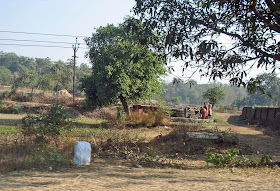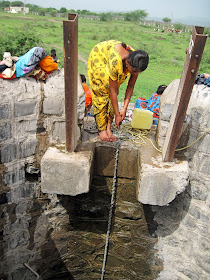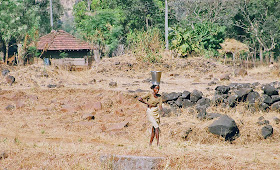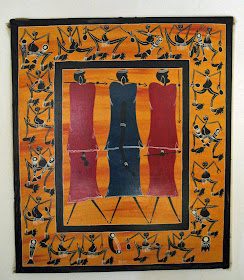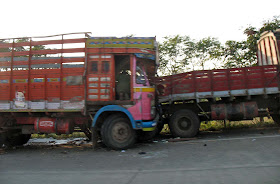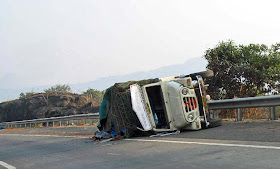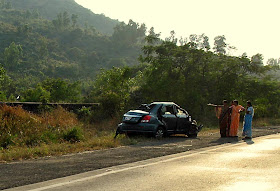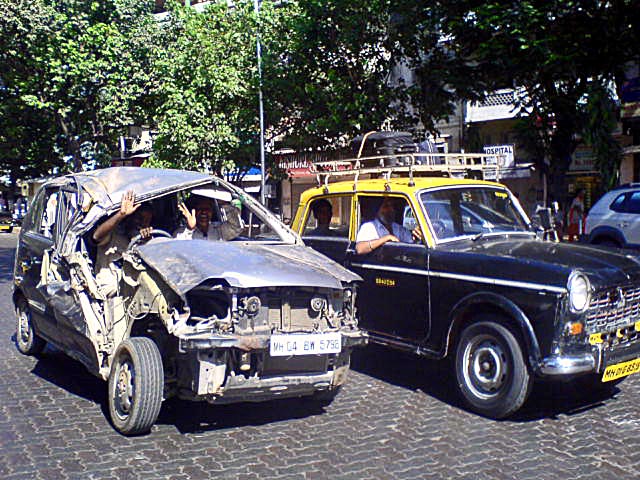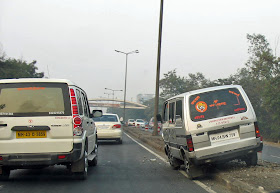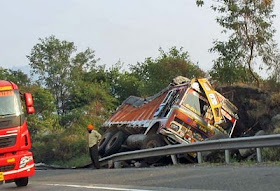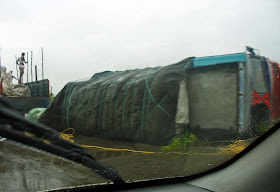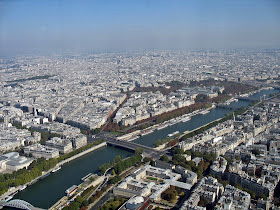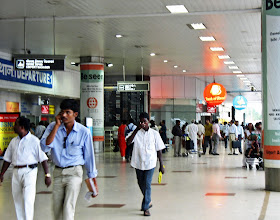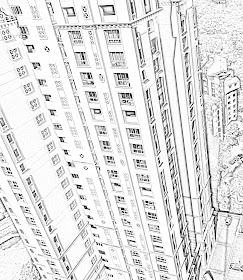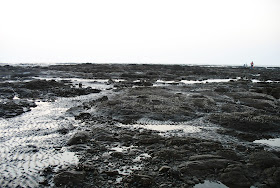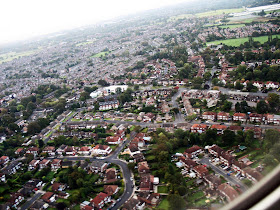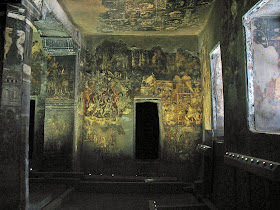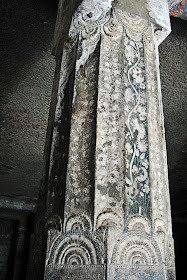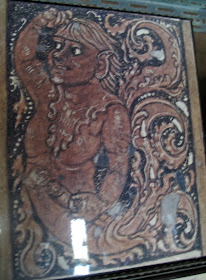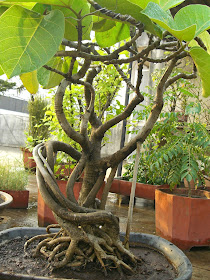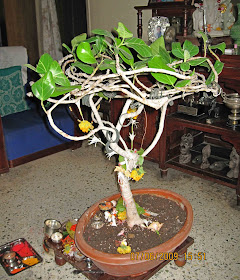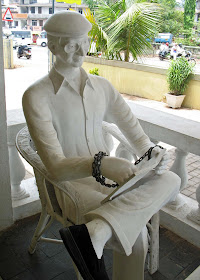These images are of village women filling and carrying water and also washing clothes near wells. They were shot in different places, but all scenes are from the western state of Maharashtra, India.
The first visuals are long shots of village women and girls filling water from a well in semi-rural India. Also of women washing clothes near the well. Usually it is women who do the job of filling water, not men. Water is not available on tap in most villages, or if it is, then it is not sufficient for daily chores. Often, women walk long distances from the well to their homes.
Here you can see women and girls with pots of water on their heads.
Here are women drawing water from a well and washing clothes by hand at the foot of the well near a small village near Nasik, Maharashtra.
A close-up of the women, one in the traditional sari while the girl is in a gown. Married women invariably dress in sarees. The mangalsutra around her neck proclaims to the world that she is married. She has pulled up water in a broken plastic bucket and is using it for washing clothes. This particular well is not the place from where they get their drinking water they told me. They get their drinking water from another well, at the other end of the village.
A close-up of the girl drawing water from the well with the help of a rope and a plastic container. No pulley seems to be visible.
This visual is a close-up of a tribal woman carrying a steel bucket to fetch water for her home. Steel buckets and metal pots are an embodiment of people who are better off. The poorest of the poor still use clay pots.The woman is from a village near Khopoli. Women in rural India tend to do hard physical labour and as a result are thin and wiry.
Related images: Tribal women in India or Rural women carrying water and firewood or Village women in Gwalior District, India
For close-ups of water wells: Inside of a water well
The first visuals are long shots of village women and girls filling water from a well in semi-rural India. Also of women washing clothes near the well. Usually it is women who do the job of filling water, not men. Water is not available on tap in most villages, or if it is, then it is not sufficient for daily chores. Often, women walk long distances from the well to their homes.
Here you can see women and girls with pots of water on their heads.
Here are women drawing water from a well and washing clothes by hand at the foot of the well near a small village near Nasik, Maharashtra.
A close-up of the women, one in the traditional sari while the girl is in a gown. Married women invariably dress in sarees. The mangalsutra around her neck proclaims to the world that she is married. She has pulled up water in a broken plastic bucket and is using it for washing clothes. This particular well is not the place from where they get their drinking water they told me. They get their drinking water from another well, at the other end of the village.
A close-up of the girl drawing water from the well with the help of a rope and a plastic container. No pulley seems to be visible.
This visual is a close-up of a tribal woman carrying a steel bucket to fetch water for her home. Steel buckets and metal pots are an embodiment of people who are better off. The poorest of the poor still use clay pots.The woman is from a village near Khopoli. Women in rural India tend to do hard physical labour and as a result are thin and wiry.
Related images: Tribal women in India or Rural women carrying water and firewood or Village women in Gwalior District, India
For close-ups of water wells: Inside of a water well
